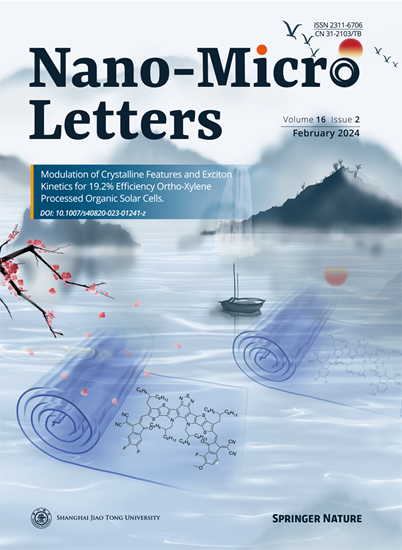增强钙钛矿太阳能电池能级匹配的策略:能量流视角。
IF 36.3
1区 材料科学
Q1 Engineering
引用次数: 0
摘要
金属卤化物钙钛矿以其优异的光电性能和广阔的应用前景,成为材料科学和光伏领域的研究热点。为了解决钙钛矿太阳能电池(PSCs)的能量损失、光电转换效率和运行稳定性方面的挑战,人们提出了各种策略,如改进钙钛矿结晶、开发串联结构和推进界面工程。然而,这些方法对psc内部能量转移和转换机制的具体影响仍然没有得到充分的了解。本文系统地研究了钙钛矿材料在光子吸收到电荷载流子传输过程中的能量和能量之间的关系,特别关注最小化能量损失的关键策略及其对能级排列的潜在影响,特别是在电子传输层和空穴传输层中。总结了能量传递过程中的最佳吸收条件和影响因素,以及高性能系统的代表性案例研究。通过阐明这些机制,本研究为优化能级排列、减少能量耗散和指导psc研究的实验设计提供了有价值的理论见解。本文章由计算机程序翻译,如有差异,请以英文原文为准。
Strategies for Enhancing Energy-Level Matching in Perovskite Solar Cells: An Energy Flow Perspective
Highlights
-
Energy transfer is systematically reviewed as a guiding principle for current materials and optimization strategies in perovskite solar cells.
-
Characteristic mechanisms are identified to classify energy-level optimization strategies into two categories.
-
Performance-enhancement strategies for perovskite solar cells are analyzed from a quantum-level perspective.
求助全文
通过发布文献求助,成功后即可免费获取论文全文。
去求助
来源期刊

Nano-Micro Letters
NANOSCIENCE & NANOTECHNOLOGY-MATERIALS SCIENCE, MULTIDISCIPLINARY
CiteScore
32.60
自引率
4.90%
发文量
981
审稿时长
1.1 months
期刊介绍:
Nano-Micro Letters is a peer-reviewed, international, interdisciplinary, and open-access journal published under the SpringerOpen brand.
Nano-Micro Letters focuses on the science, experiments, engineering, technologies, and applications of nano- or microscale structures and systems in various fields such as physics, chemistry, biology, material science, and pharmacy.It also explores the expanding interfaces between these fields.
Nano-Micro Letters particularly emphasizes the bottom-up approach in the length scale from nano to micro. This approach is crucial for achieving industrial applications in nanotechnology, as it involves the assembly, modification, and control of nanostructures on a microscale.
 求助内容:
求助内容: 应助结果提醒方式:
应助结果提醒方式:


